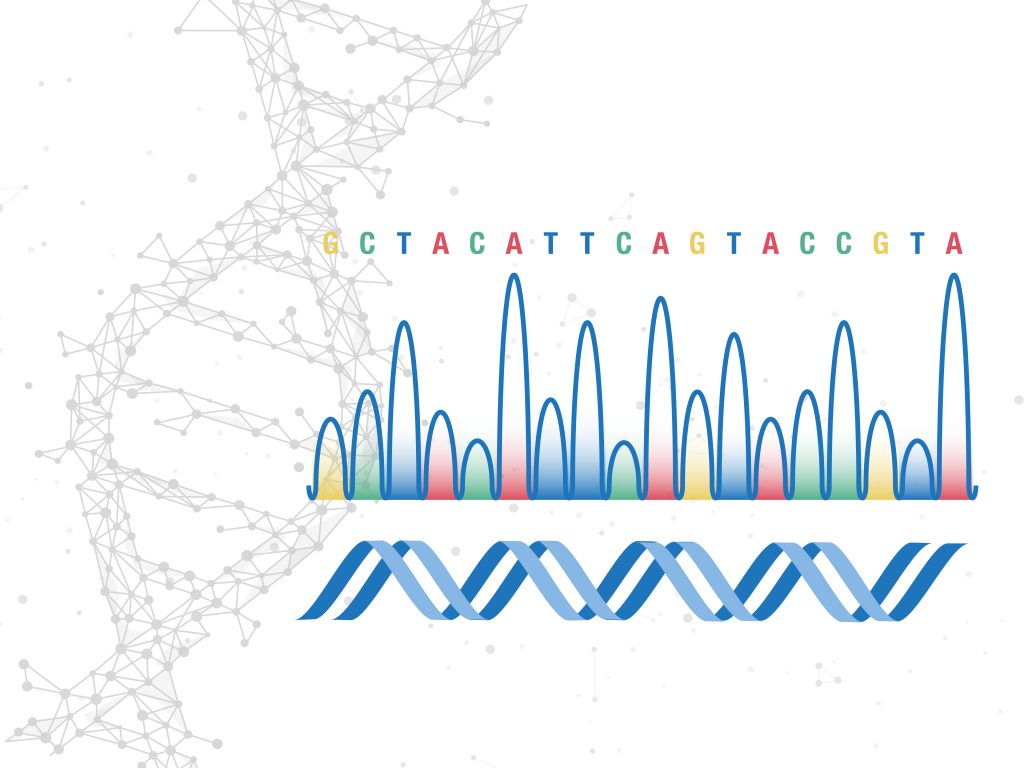Many ordinary, non-scientific people first became aware of DNA sequencing early in the 21st century, with the Human Genome Project, which culminated in 2003 after 13 years of labor in mapping out the sequence of nucleic acids in a molecule of DNA.
That project cost $3 billion. It relied on first-generation DNA sequencing, which scientists call Sanger sequencing. While Sanger sequencing employs capillary electrophoresis, it’s not as powerful as more modern approaches that conduct massive amounts of sequencing in parallel.
From the world of computer science, massively parallel computing throws more hardware and processing capability at raw information so you can make faster and more complex calculations. Sequencing DNA involves similar number crunching, so the scientific community benefits when we can process nucleic acid sequences at higher rates and bandwidth.
You may hear people refer to NGS as high-throughput sequencing. These are terms that indicate the current range of today’s genetic sequencing capabilities. Ultimately, we are looking at a new ability to scan RNA and DNA samples much more quickly than just a decade or two ago. The hardware and software make it faster and much less expensive for researchers to set up a lab and get started with state-of-the-art genetic sampling.
Three Types of NGS Technology in Use Today
Researchers have three options when it comes to NGS systems:
* Ion Torrent/Proton/ PGM: It measures the release of H+ protons when DNA polymerase incorporates different bases. It does not measure light.
* Roche 454: Fluorescence is used in a pyrosequencing approach. It detects when pyrophosphate is released, finding nucleotides that have been incorporated by the polymerase.
* Illumina (Solexa): It identifies each DNA base as it emits a distinct fluorescent signal and then adds them to a chain of nucleic acids.
Benefits of Next Generation Sequencing
The higher-speed and more efficient approach to DNA analysis provided by next generation sequencing give a number of advantages, such as:
* Blank Slate: The researchers do not need to have any previous knowledge of the genome being studied, or its features, as noted by the European Bioinformatics Institute.
This means that you can approach an experiment with a blank slate, with no preconceptions. And since you do not need to identify the material ahead of time, it gives you more flexibility in terms of what you can run experiments on.
* Better Reproducibility:
In the world of scientific research and development, it’s crucial that researchers publish their findings so that their peers can review the work and test the results. If you cannot reproduce the results of a test, you cannot tell if the original scientists were accurate or have jumped to improper conclusions. NGS allows for a higher reproducibility rate, per the EBI.
* Improved Signal:
Better data means you can draw better-informed conclusions in your research. Next generation sequencing gives scientists in the lab a more dynamic range in the signal.
* Single-nucleotide resolution:
Scientists employ NGS to find related genes using single nucleotide resolution capability. This also allows for locating allelic gene variations, polymorphisms in single nucleotides, and “alternatively spliced transcripts” in the DNA sample.
* Smaller Sample Size:
Sometimes scientists and other researchers do not have much in the way of a sample to test. With NGS, it’s possible to achieve results by using mere nanograms of DNA or RNA in your testing.
Future Tools for Genetics-based Medical Care
The future of safeguarding and promoting human health will most certainly have a major genetic component. It’s safe to say that researchers who are working on improvements in this area will rely on next generation sequencing as a tool to bring about the next capabilities leading to better and more sophisticated medical care.

